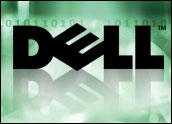
Last week, Calxeda launched its ARM-based “EnergyCore” Server on a Chip, which the company said consumes as little as 1.5 watts — the first server CPU to achieve this milestone. This makes EnergyCore ideal for workloads such as Web serving, Big Data applications, scalable analytics such as Apache Hadoop, media streaming, and mid-tier infrastructure such as caching and in-memory scalable databases, the company said.
EnergyCore includes a supercomputing-class 80-Gigabit fabric switch, and an integrated management engine with power optimization software, all on a single piece of silicon — as well as a full complement of server I/O features, and a large 4 MB ECC L2 cache. These features will enable system vendor customers to offer a complete server node that consumes only 5 watts, including 4GB of ECC memory and a large capacity SSD, according to Calxeda.
In a separate announcement, HP launched Project Moonshot, an effort designed to fuel the advancement of low-energy server technology and break new ground in hyperscale computing environments such as cloud service infrastructures. The company also announced the Redstone Server Development Platform, which leverages HP’s considerable server, storage, networking and management IP along with extreme low-energy processors. Initially, Redstone will incorporate Calxeda’s EnergyCore processors, but future versions will include Intel Atom processors and other CPUs.
Not surprisingly, public reaction to Calxeda’s announcement was enthusiastic to the point of giddiness, with the company positioned as a potentially ax-wielding Jack to x86 Giant Intel. That was certainly headline-worthy material, and the remarkable, continuing success of ARM-based silicon in the burgeoning smartphone and tablet markets makes interesting food for thought. But how likely is it that a tiny (about $48M in total funding) start-up will cause a dominant vendor like Intel serious pain?
Disruptive Technologies and Parallel Evolution
The history of IT has been enlivened by two separate, yet often highly complementary, synergistic developments: 1) the appearance of disruptive technologies whose maturation sometimes pressures or even overwhelms established products; and 2) the parallel evolution of competing technologies that mutually benefit from innovations in associated areas. There are numerous instances of this, but the x86 architecture’s journey to the data center offers a particularly interesting example.
In the first 20 or so years of its existence, x86 grew from an embedded technology into the dominant platform for personal computing. But as x86-based systems became increasingly robust, organizations and individuals recognized that x86 could easily support edge of network/data center processes like print and Web serving far more cost-effectively than the RISC-based systems prevalent in those areas.
RISC boosters derided this development, with Sun’s Scott McNealy among the most vocal, to no avail. In fact, it could be argued that Sun’s unwillingness or inability to develop successful x86 solutions contributed to its eventual demise. In any case (and in relatively short order), increasingly powerful, adaptable x86-based systems found a home in virtually every global data center, and they eventually came to dominate areas from general-purpose serving to supercomputing applications that were once the preserve of RISC and specialty systems.
The Little CPU That Could?
So, the moral of this story is that innovative little technologies could eventually kick the butts of bigger and better IT solutions. Right? Well, no, mainly because of “parallel evolution.” Though the history of IT is littered with the bones of complacent or clueless vendors, many others profit from the continuing innovation for which the IT industry is justifiably celebrated. CPU makers enjoy product and production benefits delivered by global fabs. Server vendors enhance their products with next-gen components from memory, storage, fabric and other vendors.
In other words, though the IT industry loves to celebrate the heady exploits of innovative individuals (call it the “Thomas Edison/Bill Gates/Steve Jobs effect”) the greater IT ecosystem largely progresses due to the continuing evolution of commonly available technologies. So while x86-based servers are delivering ever-better features and performance, competing products from agile vendors, whether their systems are based on RISC, EPIC or mainframe architectures, are doing the same thing.
What does this have to do with Calxeda’s EnergyCore? The history of ARM offers striking parallels to x86, so it’s easy to picture or portray Calxeda as an up-and-coming Intel of ARM-based systems. But while IT loves a horse race, no single technology is a panacea. Even if a vendor attempted to promote itself in such a manner, parallel evolution and access to innovative, cost-effective, constantly improving technologies tend to undermine such efforts.
What’s Next for Calxeda?
Overall, it seems reasonable to assume that Calxeda’s ARM-based solutions will eventually find a home in numerous data centers, particularly those that require highly energy-efficient systems. The interest of major vendors (HP’s Project Moonshot today, though we expect more partner announcements to come) should help Calxeda speed this process by enticing developers to align themselves with the company. That will be crucial, since porting or rewriting enterprise applications for a new architecture is a considerable task.
At the same time, x86 heavyweights Intel and AMD are funding muscular energy-efficiency development for their own technologies and their customers’ efforts (including, one should remember, HP’s Project Moonshot). Plus, proprietary platform vendors including IBM and Oracle are pressing forward similarly. Virtually all of these players, including Calxeda and other ARM-based server start-ups, are aiming to capture a piece of the same hyperscale computing market opportunity represented in numerous sunny scenarios related to the future of cloud computing and services.
So, where does this leave Calxeda’s EnergyCore? Pretty well positioned in the short term — especially given HP’s backing. Though it’s not likely to significantly pressure, let alone surpass, Intel’s x86 or other established server architectures or vendors any time soon, Calxeda deserves kudos for following its energy-efficiency vision, eliciting the interest of significant partners, and exciting the imagination of the marketplace.























































Social Media
See all Social Media